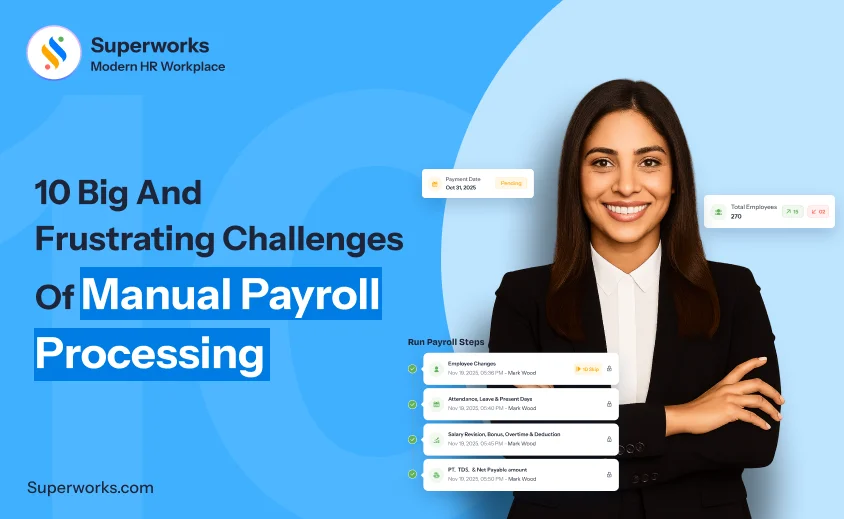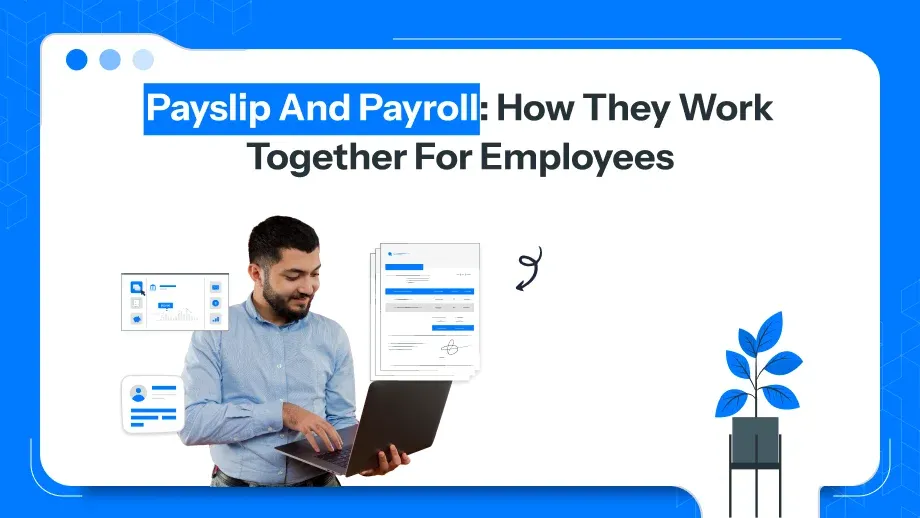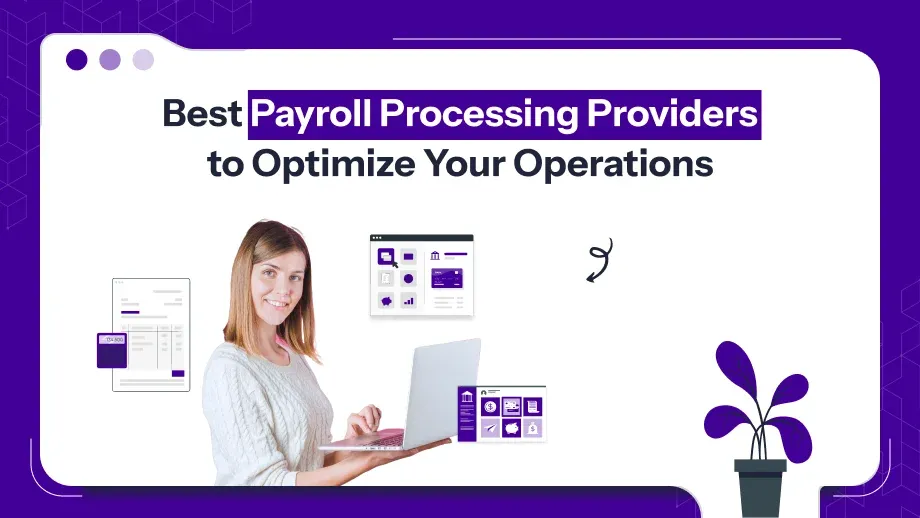
Is manual payroll processing wasting your team’s time and energy?
Many HR and payroll experts are already asking this same question, as they have concluded that a manual payroll system is not sufficient for their needs.
So, yes, their concern is right, because a manual payroll process is wasting your team’s too much energy and valuable time! Moreover, most HR professionals dealing with manual systems face the same struggles—long hours, constant double-checking, and that nagging worry about missing tax deadlines.
Manual payroll processing means tracking everything by hand or using spreadsheets. Henceforth, it’s quite easy to mess up and very, very difficult to scale. That’s why more businesses are moving towards automation very fast!
Though there are some companies that are stuck with manual methods, thinking it gives them more control. But the reality is completely different, because it may give stress, but control, Nah!
And for that reason, we have made this blog, so we can help you understand the challenges of manual payroll processing and help you switch to a better solution, aka the best payroll software. So, let us walk you through the blog so can understand these points listed below;
- What manual payroll actually involves
- Why automated payroll is usually a smarter move
- 10 big and frustrating issues you’ll face with a manual payroll system
- Why some businesses still choose to do it the old-school way
Let’s break it down.
What is Manual Payroll Processing?
Manual payroll processing is, first of all, troublesome, because here you have to calculate and manage your employee wages without using automated payroll software.
This usually involves spreadsheets, calculators, and manual data entry. Moreover, it also includes tracking hours worked, calculating pay, figuring out deductions, filing taxes, and writing checks—all done with manual struggles by themselves or with basic tools.
Small businesses sometimes choose this method because:
- They want to save on software costs
- Their team is small, and payroll is simple
- They’re used to the process and feel in control
But even if it seems manageable at first, manual payroll becomes more complicated as your business grows. More employees mean more chances to make mistakes. And small mistakes of such kind can easily lead to much bigger issues—like tax fines or even unhappy staff members.
Why is an Automated Payroll Better Than Manual Processing?
Automated payroll, unlike manual ones, handles all the calculations, taxes, and payments using software, saving time and reducing errors. Instead of keying everything in by hand, payroll software pulls in data automatically. It calculates wages, applies deductions, files taxes, and even handles direct deposits.
Here’s why it’s better than a manual payroll process:
- Fewer mistakes: The system checks the math for you
- Faster processing: It handles large teams in minutes
- Built-in compliance: Updates tax rules automatically
- Secure records: Protects sensitive employee data
- Detailed reports: Offers insights you can’t get from spreadsheets
Many HR leaders these days are becoming more and more about the challenges listed below, so please check them! Henceforth, they are switching towards a better solution so they can ditch all the hidden costs of errors and time delays. Tools like HRMS & payroll software make payroll faster, safer, and scalable.
Is your manual payroll processing slowing you down?
Reach out now for a demo and discover how to improve your payroll efficiency!
10 Challenges of Manual Payroll Processing

There are numerous manual payroll processing issues, and there’s no denying that! Because a huge burden of time consuming can pose problems for small-sized businesses that would find difficulties with keeping pace as the business will continue to grow.
A threat of such kind not only can damage accuracy and authenticity in payroll but further overall business efficiency as well and possible compliance with tax obligations. Let’s consider in detail the main problems of manual payroll processing and how they can impact your business.
1. Highly Time-Consuming and Labour-Intensive
Probably, the biggest challenge for handling a manual payroll is its labor-intensive nature and also its time-consuming nature. Processing payroll manually requires one to compute wages, apply the applicable deductions, withhold the right taxes, prepare checks, and comply with related legislation, and several such steps.
While companies may not see these issues while they operate with fewer employees, growing the employee count has several adverse consequences.
2. Human Error Prone
This payroll manual processing is prone to human errors since it involves a complicated series of mathematical calculations that are dependent on careful attention to details, and even the best-paid staff can make some errors under pressure.
3. It is Quite Difficult to be Compliant
Compliance with tax laws and regulations is the biggest challenge companies face while processing the manual payroll process. Most countries have federal, state, and local tax laws that need to be complied with and are changed very often. These changes include updates on tax rates, tax codes, deductions, and reporting requirements.
4. Lack of Scalability
The more complex the business, the more complicated the payroll. Most manual payroll systems are not scalable. When the number of employees increases, the complexity in the management process of payroll increases with it.
Adding new employees, different pay rates, tracking of vacation days, and other new benefits can overwhelm the small business owner or the HR team handling the payroll quickly.
5. Limited Reporting and Analysis Capabilities
A manual payroll system usually provides limited reporting and analysis capabilities. Automated systems enable a business to quickly generate detailed reports on wages, deductions, taxes, and employee benefits to help management make data-driven decisions. These reports are crucial for financial planning, forecasting, and audits.
6. Security Risks and Data Breaches
Manual payroll processing primarily relies on paper or electronic records, which contain sensitive employee data such as social security numbers, bank account information, and tax information. As such, records that are not appropriately maintained can get stolen, lost, or accessed by unauthorized people easily.
7. Tax Filing and Reporting Complexity
Manual payroll processing involves writing tax filings and reports, which may be very detailed and lengthy. Apart from computing the payroll taxes, businesses are supposed to make detailed reports to the local, state, and federal tax offices.
Sometimes, the process may involve making and submitting documents such as W-2s, 1099s, among other compliance forms that require accuracy and timely submission.
8. Employee dissatisfaction
Employees expect to get paid right and on time. Manual payroll processing creates possibilities for errors, and so the employees may have either delayed or incorrect payrolls. Overpaid or underpaid employees can also develop frustrations and dissatisfaction regarding their payroll process. Different paycheck amounts or discrepancies in withholdings of taxes will badly affect the trust of and morale of the employee.
9. Complex Handling of Benefits Administration
Another challenge with manual processing of payroll is the management of employee benefits such as health insurance, retirement plans, PTO, etc. A lot of detailed tracking is involved in these benefits, besides their calculations. One mistake brings severe consequences in the form of employees not receiving benefits or incorrect deductions.
10. No Backup or Contingency Plan
In an automated payroll system, generally, there is a provision for backup and recovery in case of error or other problems. In the case of manual payroll, if anything goes wrong-for example, losing a document or making an error in calculation becomes challenging to correct it easily.
Furthermore, if the person responsible for payroll leaves due to sickness or vacation, it becomes difficult to carry out the payroll process smoothly.
Why Some Businesses Still Prefer Manual Payroll Processing?
Despite its popularity, the majority of small businesses today still rely on manual payroll processing. Here are some reasons why they do it:
1. Cost-Effective Solution for Small Businesses
The smaller organizations with fewer than 10 employees would find it very cost-effective to use the manual method of payroll preparation. Generally, the third-party services, additional software, and payroll software subscriptions required for this method are too expensive. This is ideal for companies with fewer employees, such as 10 or fewer, since payroll preparation would be straightforward.
2. Total Control of the Payroll Process
Manual payroll allows business people to have full control over every procedure in the payroll process. He can adjust calculations, adjustments, and pay schedules because he needs to. A business may need this because of custom bonuses, customized pay schedules, or variable compensations.
3. Simple and Familiar
For some small business owners, manual payroll processing is a method they are familiar with. They may have been doing it for years and feel comfortable managing the calculations and record-keeping by hand. This familiarity, combined with minimal complexity in small teams, can make the process feel manageable.
4. No Need for Advanced Software or Technology
Manual payroll does not require one to buy expensive payroll software nor endure the learning curve related to new technology. For a business that already has a source of tools, which are spreadsheets, as well as personnel for handling payrolls, this is a pretty easy and straightforward approach.
Conclusion
Throughout the period, this manual payroll processing has been a method that is quite
tried and tested for decades, but the truth is that it’s not helping anymore, especially for modern organizations.
Though some’re still stuck with them, just because they are cost-effective for small businesses and require less manpower, but honestly, it doesn’t! Rather, people are switching towards modern HRMS & payroll software like Superworks’ Super Payroll.
A great tool that offers full control over payroll decisions and allows for a high degree of customization.
Henceforth, in businesses where payroll needs are straightforward, manual payroll can become a liability that companies just have to drag along. Whereas seamless payroll automation with Super Payroll can become their ultimate asset, helping them automate their entire payroll, from start to finish.
So, choose smarter, and if you’re still stuck with the manual methods of payroll, you should read its challenges once again!




 Optimize Workforce Management
Optimize Workforce Management




